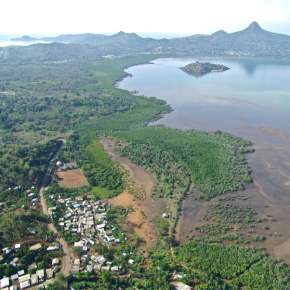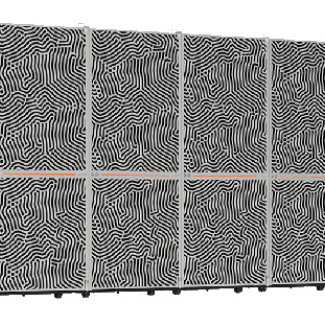
Mayotte: launch of a global study on this fragile and unique ecosystem
The CNRS and Mayotte’s Centre Universitaire de Formation et de Recherche (CUFR) have just approved the creation of a global ecology study site on the Mahoran archipelago. Thanks to this site, scientists will now have a global vision of Mayotte's unique socio-ecosystem and be able to assess its richness, functioning and resilience in the face of environmental threats.
The Mayotte archipelago is the most eastern, southern and oldest (approximately 8 million years) land to emerge from the volcanic arc of the Comoros, north of the Mozambique Channel, just off the coast of Madagascar. This geological history combined with its geographical position and range of human influences has shaped a singular landscape with an exceptional biological and social diversity.
Mayotte’s lagoon is also home to the only double barrier reef - a rare geological phenomenon - in a French marine park, and the remarkable mangroves provide coastal societies with protection, as well as being a refuge and food reservoir for many species. This rich biodiversity boasts more than 1000 plant species, and includes many emblematic animals such as the brown maki. The history of the archipelago has also shaped its characteristic cultural diversity, with populations of African, Mahoran, Malagasy, European and Indian origin.
On 29 June 2020, and in collaboration with Mayotte’s CUFR, the CNRS endorsed the creation of a global ecology study site (or SEEG1 ) on this remarkable archipelago. Its objectives: to study all the components of Mayotte’s socio-ecosystem; and to assess its richness, functioning and resilience due to rapid changes in the territory (e.g. the recent appearance of an underwater volcano) and in the face of significant meteorological, marine and health risks.
For at least four years, researchers will be able to draw on this biological, geological and human wealth to better understand the island and coastal socio-ecosystem responses to anthropogenic pressures, and the evolutionary scenarios and adaptation capacities of these high-risk environments. Mathematical modelling will also be used to study the dynamics of epidemic disease transmission in the territory.

© François FROMARD/ECOLAB/CNRS Photothèque
- 1SEEGs are sites or areas where interdisciplinary studies on ecology, biodiversity and human-environment interactions can be carried out by a variety of disciplines: environment, biology, conservation, and human and social sciences. They are created for a period of 4 years, but are renewable on a case-by-case basis.


